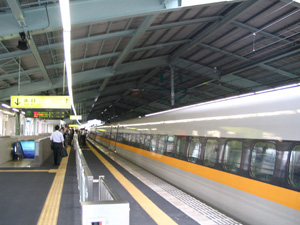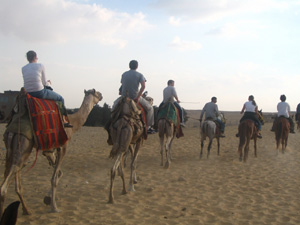Semester at Sea Fall
2006 Voyage 
Multi-Sited
Ethnography Project: Transnational Networks, Grounded in Transportation
By Suzanne Schefcik
The
way in which anthropologists today write ethnographies
is rapidly changing. In previous times, single sited ethnographies
dealing with
larger social orders and macro-constructions were commonplace. Today,
however,
multi-sited ethnographies are becoming more popular. Multi-sited
ethnographies
are, “multiple sites of observation and participation that cross-cut
dichotomies,”
according to George Marcus in his article "Ethnography in of the World System:
the Emergence of a
Multi-Sited Ethnography." Throughout my own travels around
the world,
I have
discovered that transportation is a common theme throughout each
nation.
 Transportation
really can define a culture in more ways than one. Through
transportation,
governmental practices, social configurations and economical means can
be
distinguished. Every country throughout the world has some sort of
public or
private transportation, each one somewhat different than the other.
Although it
is seemly meaningless to research transportation because it seems
irrelevant to
human life, this topic renders many cultural attributes.
Transportation
really can define a culture in more ways than one. Through
transportation,
governmental practices, social configurations and economical means can
be
distinguished. Every country throughout the world has some sort of
public or
private transportation, each one somewhat different than the other.
Although it
is seemly meaningless to research transportation because it seems
irrelevant to
human life, this topic renders many cultural attributes.
During my
travels in
In
opposition to ovided
transport to a
vast
majority of people. In addition, working conditions of the drivers
remain
terribly low. It is apparent the growing population affects the mass
disorganization of public transport.
The final
country
in which transportation methods affected the society was

Chapter 1 Ding Dong: Japanese Transit
Chapter
2 Reckless Rickshaws in India
Throughout
the entire planet, public transportation is eminent; whether it be
walking,
riding a camel or speeding in a rickshaw. “Transnational networks are
grounded
in particular places, even if these places are multiple rather than
singular,
and they have an impact on localities and regions,” wrote Alan Smart in
an
article titled "Participating in the
Global: Transnational Social Networks
and Urban Anthropology." Transportation remains a transnational
network
located throughout multiple sites around the world. Public
transportation helps
one gain insight on governmental practices, social configurations and
economical means. The underlying social constraints are visible when
one takes
the time to evaluate them. In accordance with my own personal
experiences in